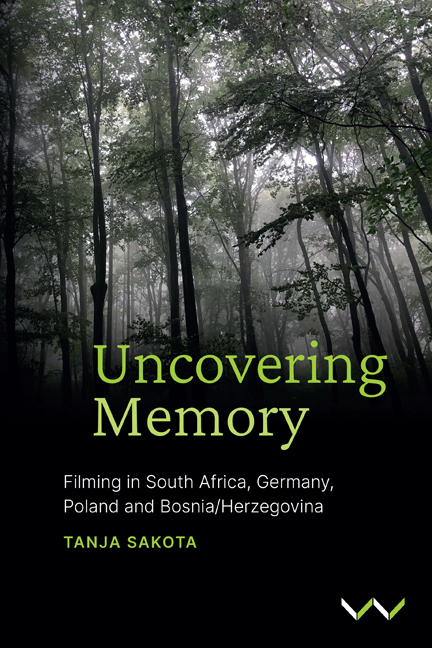Book contents
- Frontmatter
- Dedication
- Contents
- List of Images
- Foreword
- Acknowledgements
- Map of Africa and Europe
- Practice-Based Research, Teaching and Learning
- Part I Working With Students: Cape Town, Johannesburg, Berlin
- Part II Working With Peers: Constitution Hill, Johannesburg
- Part III Working With Myself: Poland, Germany, Bosnia/Herzegovina, South Africa
- Moving Forward
- Film Credits
- Glossary of Terms
- Notes
- Bibliography
- Index
Chapter 3 - Accessing memory through the visible and the invisible
Published online by Cambridge University Press: 24 November 2023
- Frontmatter
- Dedication
- Contents
- List of Images
- Foreword
- Acknowledgements
- Map of Africa and Europe
- Practice-Based Research, Teaching and Learning
- Part I Working With Students: Cape Town, Johannesburg, Berlin
- Part II Working With Peers: Constitution Hill, Johannesburg
- Part III Working With Myself: Poland, Germany, Bosnia/Herzegovina, South Africa
- Moving Forward
- Film Credits
- Glossary of Terms
- Notes
- Bibliography
- Index
Summary
Memory is a vehicle that takes us back in time. From a personal point of view, it exists in our minds and can be identified as an abstract idea that invades our conscious thoughts. We can remember things that we have directly experienced, but sometimes our ‘memories’ become enmeshed within complex social, political and historical structures. Within the intellectual landscape the term points towards a vast spectrum of interpretation, which ranges from personal and individual memories to psychological, scientific, historical, political, cultural, public, national and collective memory, to name but a few. This gives rise to the field of memory studies, which is a broad interdisciplinary field that ‘involves various traditions existing in diverse parts of the intellectual landscape’ (Roediger and Wertsch 2008, 11). At best, it creates opportunities for recognition, direction, interaction and conversation about the past and what we are remembering. At worst, it is an unstable source that relies on subjectivity and personal interpretation that is always accompanied with forgetting. Due to its complexity I am reluctant to offer a definition for memory but I propose we consider different understandings, contexts and approaches to memory within the different parts of the book.
Memories are not tangible objects, but they are accessible through different methods or triggers. The five senses of sight, smell, touch, taste and hearing can assist in triggering the memory of certain events. The camera and the act of filming can control and alter what we see and what we hear but it cannot capture the senses of touch, taste or smell. The aim is to focus on what the camera/film can capture and explore its relationship to invisible memory and the senses. If memory is essentially abstract but visual, then how can the camera become the metaphor for the eye and the ear? Memories can reflect joyful and happy events, but they can also remind us of harmful and haunting ones. There are different perceptions of memory, but here the films focus on re-visiting events as a catalyst to re-create memory. This does not involve a staged re-enactment of events that one would see in documentary film, for example. It involves different perceptions that are rooted in accessing the past via a personal interpretation and understanding of events. The emotion attached to the memory becomes as abstract as the memory itself.
- Type
- Chapter
- Information
- Uncovering MemoryFilming in South Africa, Germany, Poland and Bosnia/Herzegovina, pp. 27 - 38Publisher: Wits University PressPrint publication year: 2023



